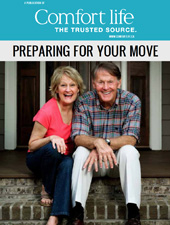Elderly falls are one of the top reasons for people searching for senior housing, due to incurred injury or the fear and vulnerability that a bad fall can induce. Falls by the elderly can be avoided and the impact can be reduced, no matter if the senior person is living alone or with others.
Here's a look at the very important issue of elderly falls.
Facts about falls by the elderly
- Falls are a leading cause of seniors' injuries everywhere. For example, the Office of the Provincial Health Officer in British Columbia estimates that one in three elderly people in that province will have a fall in any given year.
- About 40% of all seniors' housing admissions are the result of falls, according to a report by the Public Health Agency of Canada (2005) .
- Elderly women are at higher risk for falls. This is due to a variety of factors including higher rates of osteoporosis as well as a tendency to outlive men.
- Falls by elderly people in Ontario account for approximately 1 billion dollars a year in direct and indirect costs according to SMARTRISK1
- Falls are the cause of 95% of seniors' hip fractures, while over 20% of the elderly who suffer hip fractures die within the next twelve months.
- The great majority of elderly falls are preventable through proper preparation and care.
Some root causes of elderly falls
Many senior falls are preventable but first let's take a look at some of the main causes of elderly falls to understand that there are risks that can be avoided.
Within the home or elsewhere on the seniors' property there are certain risks that need to be monitored and removed if present, in order to reduce the potential of seniors falls. These include:
- Slippery floors, loose carpeting, frayed or unnecessary throw rugs, cords in traffic areas
- Unkempt rooms or transit areas, where unnecessary obstacles such as cords or slippery materials (such as pet waste, fallen food, etc.) can cause falls.
- Poor lighting, where dead light bulbs have not been replaced or where lighting is insufficient due to low wattage or other unnecessary hazards.
- uneven floor surfaces including interior and exterior (notably sidewalks, for example)
- Slippery, icy or snowy sidewalks and wet entryways are obvious hazards that must be avoided to prevent unneeded senior falls.
- Unnecessarily heavy handbags or any other personal accessories.
- Poorly marked steps, curbs, or other surface transitions.
- Overemphasis on independence or self reliance where the senior insists on (for example) using ladders to change their own light bulbs, etc.
- Improper use or deliberate neglect of walking aids such as canes or walkers.
- Clothes or shoes that fit too loosely.
The real risk in any of these hazards, of course, is that you or your loved one may be unnecessarily injured, may require hospitalization or extended care, or may lose their independence for a period of time - or permanently.
Sources:
1SMARTRISK. (2006). The Economic Burden of Injury in Ontario. Toronto: SMARTRISK, 2006.
2Office of the Provincial Health Officer. (2004). Prevention of Falls and Injuries Among the Elderly. Victoria: B.C. Ministry of Health Planning. (PDF)



